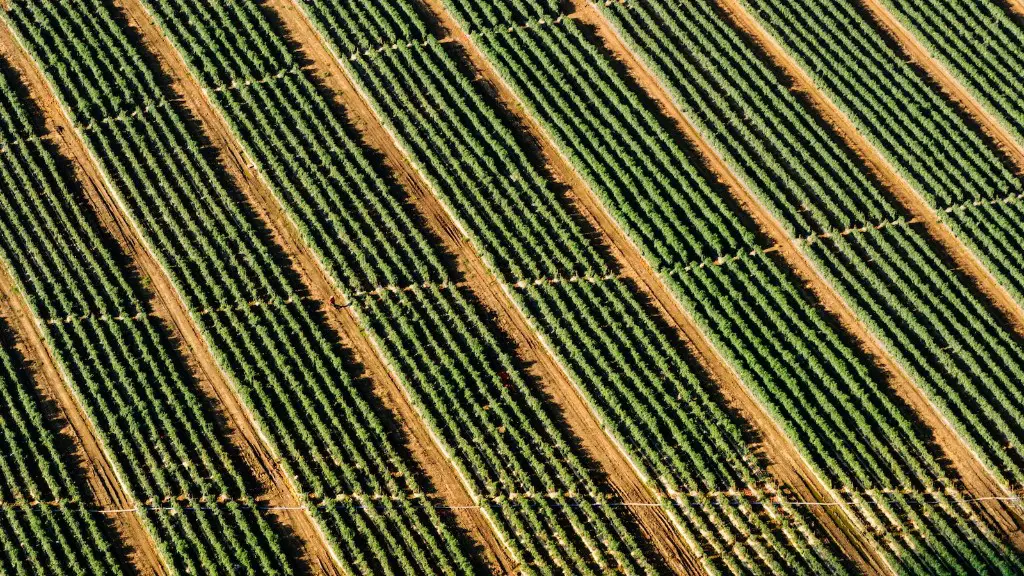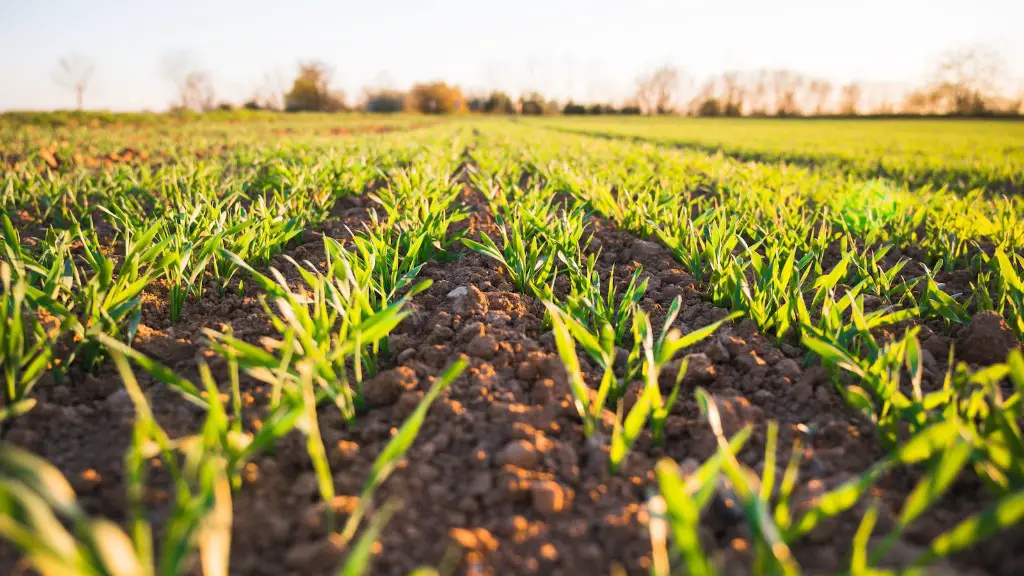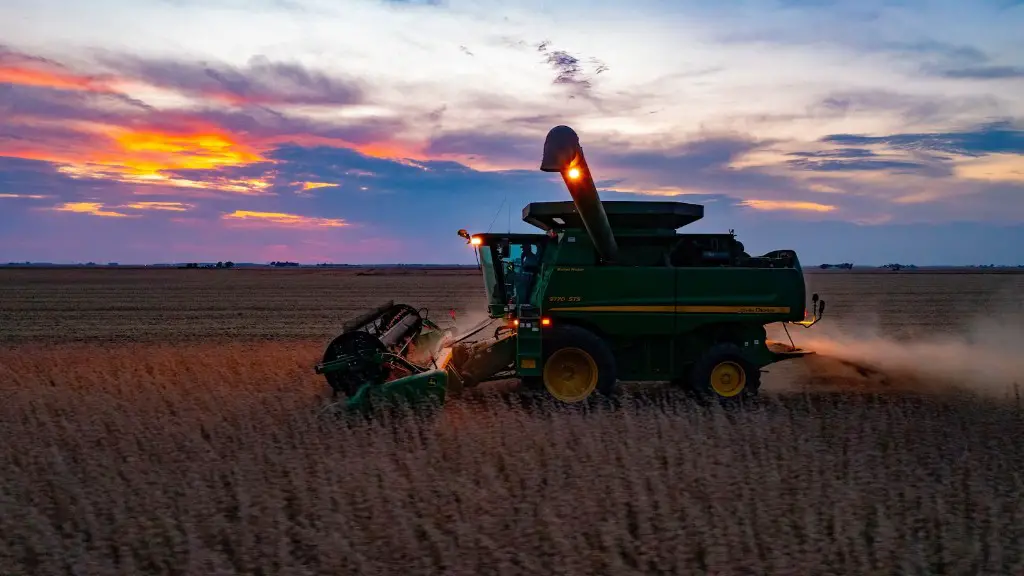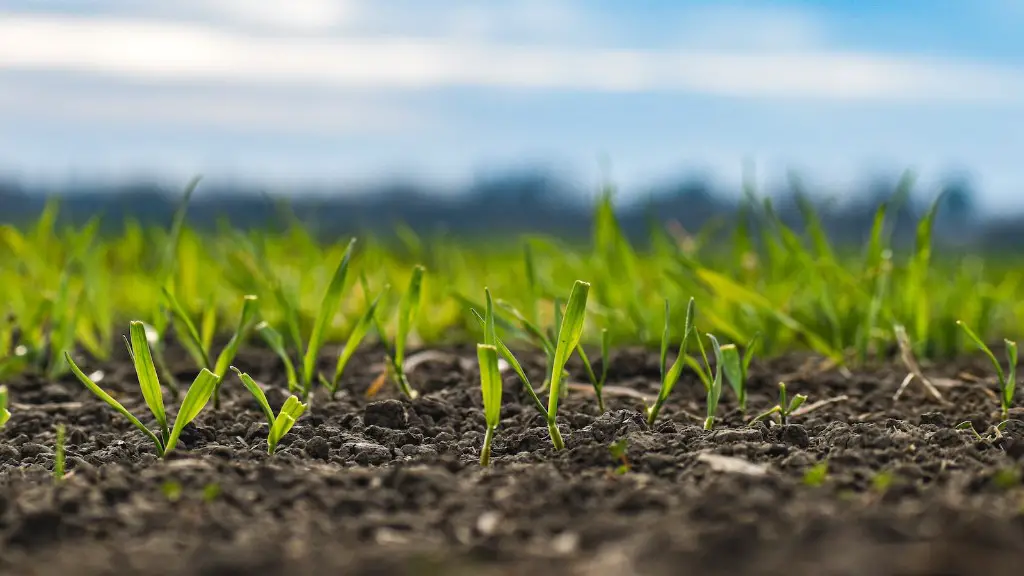The commercialization of agriculture is the process by which farmers produce crops or livestock for sale, usually through middlemen, rather than for their own consumption or to exchange with other farmers. This usually results in the increased use of technology and inputs like fertilizers, pesticides, and improved seeds, to increase productivity.
The commercialization of agriculture involves the production of crops and livestock for sale on the open market. This can include the use of large-scale farming techniques, intensive animal husbandry, and the use of mechanized equipment.
What is commercialisation agriculture?
It is important to note that agricultural commercialisation is not the same thing as industrialisation or modernisation of agriculture.Commercialisation can happen in both small-scale and large-scale agriculture, and does not necessarily require the use of modern technology or farm machinery.
There are both positive and negative impacts of agricultural commercialisation. On the positive side, it can lead to increased production and incomes for farmers, and can provide employment opportunities in the rural areas. On the negative side, it can lead to the exploitation of farmers by middlemen, and can result in the displacement of small-scale farmers by large-scale commercial operations.
Agricultural commercialisation is often seen as a necessary step in the development of a country’s agriculture. However, it is important to ensure that the negative impacts are minimised, and that the benefits are shared equitably among all those involved in the agricultural sector.
The commercialization of agriculture has led to the production of crops and goods by the peasants for sale in the market, rather than for their own consumption. This has had a number of negative consequences, including the loss of traditional knowledge and skills, the increased dependence on inputs from the market, and the increased vulnerability of peasants to price fluctuations.
What are the reasons for commercialization of agriculture
The goal of commercial agriculture is to make profits by maximising crop yields through labour-saving techniques, use of fertilisers, hybrid seeds and the use of farming machinery. Commercialisation of agriculture helps to increase productivity. This in turn results in higher incomes for farmers and improved food security for the population. It also creates employment opportunities in the rural sector.
Commercialization is the process of bringing new products or services to market. The broader act of commercialization entails production, distribution, marketing, sales, customer support, and other key functions critical to achieving the commercial success of the new product or service.
In order to commercialize a new product or service, businesses need to invest in research and development, undertake market feasibility studies, and build the necessary infrastructure to support production, sales, and distribution. Additionally, businesses need to create a marketing and sales strategy to generate demand for the new product or service.
Commercialization can be a complex and expensive process, but it is essential for businesses to bring new products or services to market. By investing in commercialization, businesses can increase their chances of success and generate significant returns.
What was the effect of commercialisation of agriculture?
Commercialization is the process of turning an invention or idea into a product or service that can be bought and sold. This can be a new product or service, or an existing one that is improved or adapted for a new use.
The main advantages of commercialization are that it encourages growth of social exchange and helps to improve productivity levels. Commercialization can also lead to increased employment opportunities and higher incomes for individuals and businesses. Additionally, it can help to promote innovation and creativity.
Commercialisation of research is important for several reasons. Firstly, it can help to sustain funding and staffing levels by generating revenue from research. Secondly, it can help to increase the personal recognition of researchers, as well as the research itself, by providing a platform for its dissemination. Finally, it can also help to improve the ratings of the research in the Research Excellence Framework and the Knowledge Exchange Framework.
What is an example of commercial agriculture?
Commercial agriculture is a vital part of the food system. It provides food for people who may not have access to fresh, healthy food otherwise. It also creates jobs and supports local economies.
Tobacco is an example of commercial farming. It is grown largely in semi-arid and rain-fed areas where the cultivation of alternative crops is economically unviable. India is the world’s 2nd largest producer of tobacco.
What are the main problems of commercialisation
There are a few key problem areas when it comes to commercialising a startup: infrastructure, marketing, financing, and internationalisation. Startups need to have a strong infrastructure in place in order to successfully commercialise, and this includes things like a well-functioning website, good customer support, and strong back-end systems. Marketing is also critical for commercialisation, as startups need to get their name out there and attract customers. Financing is another important piece of the puzzle, as startups need to have the funding in place to support their growth. And finally, internationalisation is often key for startups that want to scale their business. STF managers and venture capitalists should focus especially on marketing and internationalisation when working with startups.
There are many strategies that companies can use to commercialize their products and services, but the most effective ones address three main challenges: speed of commercial analytics, business agility, and unification across data sources.
Commercial analytics is the process of collecting and analyzing data to understand customer behavior and trends. The faster a company can analyze this data, the better they can adapt their products and services to meet customer needs.
Business agility is the ability to quickly adapt to changes in the marketplace. A company that is agile can quickly pivot their business model to take advantage of new opportunities or respond to changes in the market.
Unification across data sources is the ability to access and use data from multiple sources in a consistent way. This allows companies to get a complete picture of their customers and make better decisions about their product and marketing mix.
What is an example of commercialization?
Many people in the United States believe that healthcare should be a right for all citizens, not a privilege. However, the commercialization of healthcare in the US means that private entities are running healthcare for profit, not for the benefit of citizens. This often leads to higher prices and poorer quality care. There are some great examples of healthcare commercialization in other countries, such as the UK, where the government provides healthcare for all citizens. This ensures that everyone has access to quality care, regardless of their income.
There are three main options when it comes to commercialising a product or invention: licensing, producing and selling it yourself, or collaborating with another business or university.
Licensing is when you give someone else the rights to manufacture and sell your product in return for a fee or royalty. This can be a good option if you don’t have the resources to produce and market the product yourself.
Producing and selling it yourself is the most hands-on option, and gives you the most control over the product. However, it can be costly and time-consuming to get your product to market.
Collaborating with another business or university can give you access to their resources and expertise. This can be a great way to get your product to market quickly and efficiently.
What is another word for commercialization
The word commercialization can be used interchangeably with words like popularization, dissemination, promotion, propagation, and universalization. Commercialization is the process of making a product or service widely available to consumers. This can be done through marketing and advertising campaigns, as well as making the product available in stores or online.
The Company and its officials reaped immense benefits from the commercialization of agriculture while the peasants suffered. The Indian tribute was transferred to Britain in the form of exports of the commercial crops and India recovered no imports in return. Obviously, such a transfer impoverished India.
Which is the most common method of commercialization?
Commercialization is the process of turning a new idea or invention into a product or service that can be sold. There are many different ways to commercialize a new idea, and the most appropriate method will vary depending on the type of product or service being created.
One common commercialization method is known as joint research contracts. This involves partnering with another company or organization that has expertise in the field of the new product or service. Together, the partners work to develop the product or service and bring it to market.
Another common commercialization method is exhibiting the product or service at trade shows or other events. This can be a great way to generate interest and get feedback from potential customers.
Finally, many companies create spin-off businesses to commercialize their new ideas. This involves creating a new company that is focused solely on the new product or service. The parent company often provides funding and support to the spin-off, but the two businesses are separate entities.
There are several disadvantages of commercialization, such as the high cost of production, the lack of welfare orientation, and the negative environmental impact. Commercialization often leads to higher prices for goods and services, as companies must recoup their investment costs. This can make essential goods and services unaffordable for some people. Additionally, commercialization is often driven by a profit motive rather than a concern for public welfare. This can result in products that are inferior in quality or that are unsafe. Finally, commercialization can have negative environmental impacts, as companies may seek to cut costs by polluting the air, water, and land.
Warp Up
The commercialization of agriculture is the process of transforming agriculture from a small-scale, subsistence activity into a large-scale, industrialized enterprise. This transformation typically involves the introduction of new technologies and farming practices, the consolidation of small farms into larger units, and the rise of agribusinesses that control the production and distribution of agricultural goods.
In conclusion, commercialization of agriculture is the process by which farmers produce crops and livestock for sale in the marketplace. This can be done through direct sales to consumers or through wholesale and retail channels. Commercialization of agriculture often leads to higher yields and better quality products, which can benefit both farmers and consumers.





